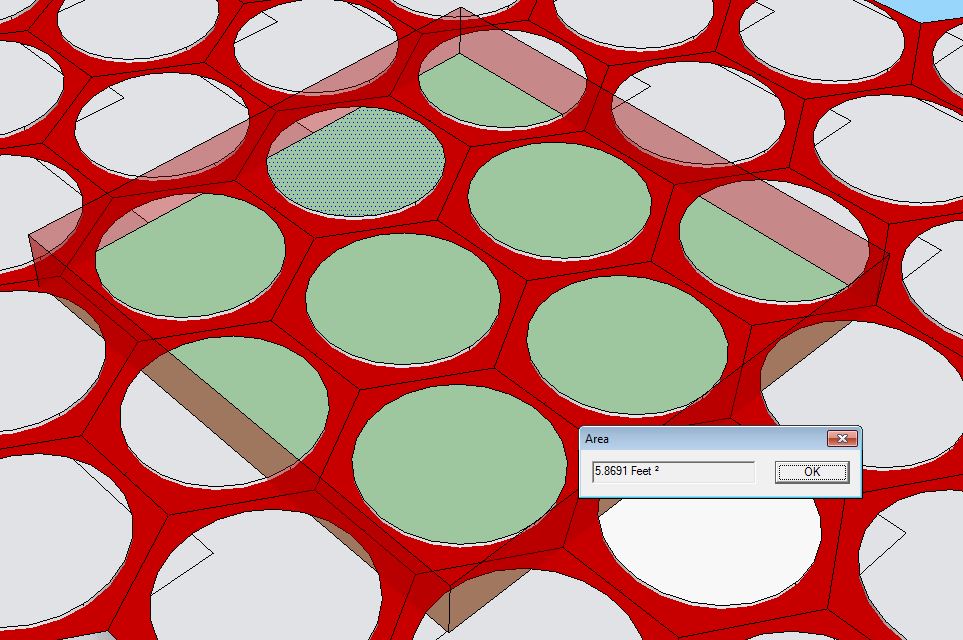

| Visitors Now: | |
| Total Visits: | |
| Total Stories: |

| Story Views | |
| Now: | |
| Last Hour: | |
| Last 24 Hours: | |
| Total: | |
Square and Round Bucket Storage Efficiencies
It’s clear that square buckets utilize more of a given space than round buckets. Knowing exactly by how much is useful if you’ll be storing a large volume of food, equipment or emergency supplies in a limited space.
 The Summary
The Summary
Round buckets organized optimally in a honeycomb pattern take up approximately 65% of available space at their base. Square buckets are more efficient, taking up approximately 85% of available space.
However – round buckets lose even more storage capacity near the edges of a room. To see what I mean, look at this bucket stacking analysis in a 12×12 room. Notice the large gaps every other row. The gaps are mirrored on the opposite side, wasting 1/2 a bucket of space per row.

The Numbers
I arrived at these figures by modeling in 3D standard sized 5 gallon round buckets and 4 gallon square buckets.

To find the space efficiency for both bucket types, I copied my buckets into a closely packed cluster. I took one square yard out of the cluster and found the surface area of the buckets within that square yard. Dividing the bucket surface area by the area of the entire square yard yields the percentage efficiency.

Digital buckets can be copied an infinite number of times for free. Performing a digital bucket stack analysis before you go out and buy a flat of empties might save you from buying the wrong size, buying too many, or buying too few.
Warning: Estimate Only!
My figures of 65% and 85% should be treated as approximate for the following reasons.
- Buckets are not shaped like perfect cubes or cylinders. Almost all buckets get slightly wider toward the top and have extra bits like handles and ridges that get in the way. And when lidded, they will need slightly more horizontal space. That means that un-lidded buckets will be slightly more efficient than my figures suggest, and lidded buckets slightly less.
- Every bucket model varies slightly, yielding different storage inefficiencies. Some buckets may be thinner and taller while others are shorter and fatter, even if they all contain the same 5 gallons.
Perform your Own Bucket Stack Analysis!
The free software I used for this analysis is called Sketchup. It’s the most useful program out there for designing anything from chicken coops to palaces.
You can model any part of your own house using this program, then find out its storage capacity by filling it with digital buckets. I’m making the exact file I used for all the images above available for download to get you started.

Source: http://fivegallonideas.com/square-bucket-storage-efficiencies/?utm_source=rss&utm_medium=rss&utm_campaign=square-bucket-storage-efficiencies


